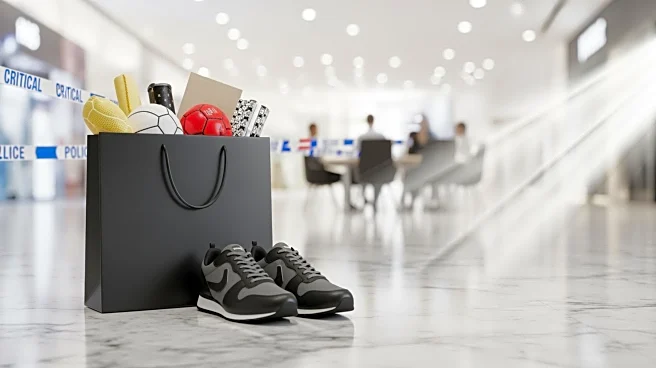What's Happening?
Retail brands are increasingly focusing on storefront design to attract customers both physically and digitally. The concept of storefront design in 2026 involves creating entry points that connect physical presence
with digital discovery, aiming to convert attention into action. This includes elements like window displays, signage, entryway design, lighting, and layout for physical spaces, and homepage hero sections, Google Business Profiles, and social storefronts for online presence. The design principles emphasize clarity, transparency, consistency in branding, accessibility, emotional connection, continuous evolution, and evidence-driven design. These strategies are intended to increase foot traffic, clicks, and ultimately sales, by creating a seamless experience that bridges the gap between physical and digital shopping environments.
Why It's Important?
The evolution of storefront design is crucial for retail brands as it directly impacts customer engagement and sales. By integrating physical and digital elements, brands can create a cohesive shopping experience that appeals to modern consumers who often research online before visiting stores. This approach not only enhances brand visibility but also builds trust and familiarity, encouraging repeat visits and purchases. The focus on accessibility and inclusion ensures that all customers can engage with the brand, expanding the potential customer base. Additionally, the use of data-driven design allows brands to measure the impact of their strategies, enabling continuous improvement and adaptation to changing consumer behaviors and market trends.
What's Next?
Retail brands are expected to continue refining their storefront designs, incorporating seasonal themes and sensory elements to keep the experience fresh and engaging. As technology advances, the integration of digital and physical storefronts will become more sophisticated, with features like QR codes linking window displays to online landing pages. Brands will likely invest in analytics to track customer interactions and optimize their designs for better performance. Collaboration with interior designers, visual merchandisers, and signage vendors will be crucial in executing these strategies effectively. The ongoing adaptation to consumer preferences and technological advancements will shape the future of retail storefront design.
Beyond the Headlines
The shift towards integrated storefront design reflects broader trends in retail, where the boundary between online and offline shopping is increasingly blurred. This approach not only enhances customer experience but also aligns with sustainable practices by optimizing space and resources. The emphasis on emotional connection and storytelling in design highlights the growing importance of brand identity and consumer loyalty in a competitive market. As brands navigate these changes, ethical considerations around accessibility and inclusivity will play a significant role in shaping their strategies and public perception.











